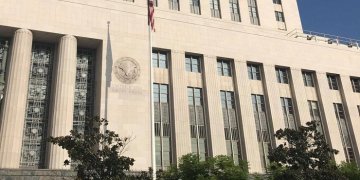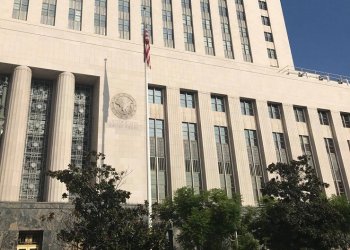
The Bay Foundation (TBF) has recently been awarded key climate change-related grants. Every aspect of TBF’s work takes into consideration the potential effects and mitigation of climate change in the 266 sq. mile Santa Monica Bay and the 400 sq. mile watershed that drains to the Bay. With 5,000 species of animals, fish, birds and plants making their home in the Bay and its watershed, along with millions of people who visit, live and work here, TBF is intent on garnering grants that can help keep the Bay’s resources healthy and resilient.
Here follow some important questions and explanations of how awarded grants can help all life in the Bay respond to climate change.
What Our Coastline will look like in 2030, 2050, and 2100 based on Projected Sea Level Rise and Storm Surge Scenarios and how should we prepare? To answer these questions, TBF helped to convene a partnership of 11 local coastal jurisdictions and organizations and launched the regional AdaptLA project. Funded by a grant from the state Coastal Conservancy and Coastal Commission, this multi-year project will gather data and model future beaches by examining regional shoreline change, and model and assess Los Angeles coastal region’s exposure to sea level rise and other coastal processes. The modeling results will be especially useful for identifying coastal vulnerability because they will both be based on sea level rise scenarios, and consider local water levels and waves, especially waves coinciding with conditions such as high tides, storm surges and El Niño, when projecting inundation, erosion, flooding, and other damage potential.
Do our Kelp Forests help protect the shoreline? That’s a long term question for TBF, and other coastal resource managers in California. TBF, with Universities in LA and the Central Coast, is working on a study to measure the ability of our recently restored kelp forests (see more here) to attenuate wave energy, influence currents and alter the flow of sediment. This study will advance their understanding of how kelp forests may reduce erosion and protect our coastlines. The project has been funded by the State Coastal Conservancy as part of the Conservancy’s larger Climate Ready Grant Program.
Is there more acidification and less oxygen in our Bay? The root cause of Ocean Acidification is global atmospheric emissions of human-generated CO2. Localized input of nutrients into coastal waters can also have an additive effect by lowering oxygen and increasing CO2 from excessive production of micro-algae, (plankton) and their subsequent decomposition. The U.S. EPA awarded a grant to TBF to install high-precision, high-frequency pH and pCO2 sensors with project partners. These sensors will gather much-needed non-stop measurements of acidification and oxygen deficiency, helping us understand the trend of how much more acidic the ocean is becoming and how fast.
How should the Bay Restoration Plan milestones be tweaked to serve the Bay best, or are they fine as they are? TBF competed and was awarded another U.S. EPA grant to support the review of the Bay Restoration Plan, the SMBNEP’s comprehensive plan of action for protecting and restoring Santa Monica Bay. This grant directs us to determine whether our goals and investments are consistent with predicted climate change for our region. TBF will review the BRP, with experts from the U.S. EPA, for vulnerabilities and opportunities towards increasing resilience against sea level rise, warmer water, warmer weather, increasing drought and storminess, and ocean acidification.
For more information about the Bay Foundation visit www.santamonicabay.org.





















